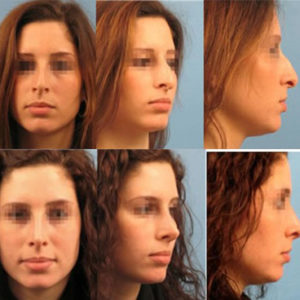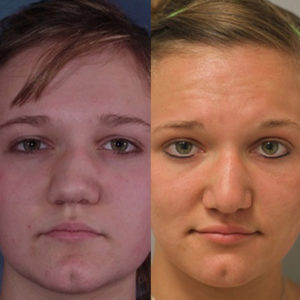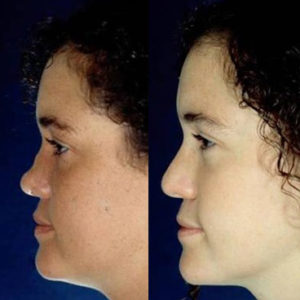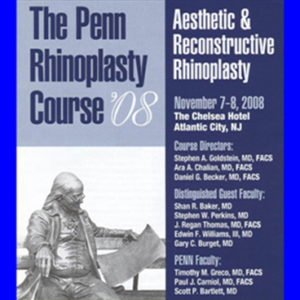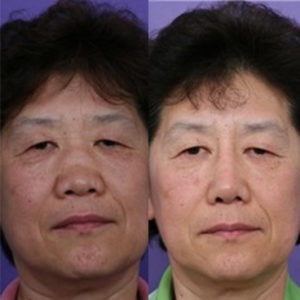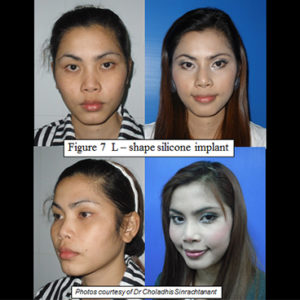Abstract Special anatomic features determining both nasal aesthetics and function make middle vault surgery a challenging task for the rhinoplastic surgeon. Spreader grafts and spreader flaps, the split hump technique and the use of diced cartilage with fascia are some of the most common tools currently used for correction. The techniques described in this article… [Read More]
Rhinoplasty
Saddle Nose Deformity: Selection of Augmentation Materials and Management
Introduction A saddle nose deformity is characterized by a markedly depressed bony dorsum and an accompanying collapse of the middle nasal vault in relation to the tip and dorsum1. This deformity is the result of a complex interplay of factors leading to the loss of structural support of the nasal septum and upper lateral cartilages,… [Read More]
Saddle Nose Deformity
Nasal reconstruction has historically been a challenging art for surgeons. Straddling the realm of aesthetics and anatomic function, rhinoplasties are temperamental procedures and leave little room for error. Of nasal repairs, saddle nose is not uncommon and remains challenging. Resulting from a broad spectrum of etiologies, and presenting with a wide degree of variation and… [Read More]
Lecture On Osteotomies
Welcome to the 6th PENN Rhinoplasty Course. It is nice to have you all here at our course, which for the first time we are having here in the Chelsea Hotel in Atlantic City. My co-course directors are Dr. Ara Chalian and Dr. Stephen Goldstein, and we would like to welcome you all. As you… [Read More]
Irradiated Rib Grafts in Rhinoplasty
INTRODUCTIONIrradiated homologous rib grafts (IHRGs), might be an alternative for autologous cartilage grafts in case there is insufficient quantity-, or quality or when the shape of the autologous grafts is not adequate for a successful nasal reconstruction. IHRGs can be used to augment and/or to provide structural support in a recipient site. Alloplasts, like silicone,… [Read More]
Rib Grafts In Rhinoplasty
This lecture covers the use of rib grafts in Rhinoplasty. The rhinoplasty surgeon often encounters the need to utilize grafts when performing primary or revision surgery. Septal cartilage is typically the graft material of choice and this is especially true for primary cases. However, patients who have had prior nasal surgery or traumatic nasal collapse… [Read More]
Alar Base Modification
INTRODUCTION / BACKGROUND The alar base plays an important role in the overall appearance and proportion of the nose. An overly wide or flared alar base will lead to a “bottom heavy” nose and disrupt the delicate balance of an otherwise properly executed rhinoplasty. Alar base refinement is often incompletely and inadequately described.1 The techniques… [Read More]
Rhinoplasty in Children
INTRODUCTION Rhinoplasty in children and adolescents remains a topic of controversy. In children, both open- and endonasal approaches can be used to reallocate or reconstruct the nasal skeleton after trauma, infection or in congenital deformities. Alternatively these approaches can be used as a route to remove malignant or benign pathology. The cartilaginous nasal septum is… [Read More]
Asian Rhinoplasty
1. Anatomical characteristics As a result of the diverse ethnicities in Asian populations, the anatomic characteristics of Asians vary greatly. Although there are substantial variations, in the typical Asian nose, the nasal skin tends to be thicker than Caucasian noses, with abundant subcutaneous soft tissue. The tip of the nose is usually low and the… [Read More]
Asian Rhinoplasty 2
Introduction The Continent of Asia consists of several races and ethnic nasal shapes. Asian noses vary in height and width from the noses of the Indian subcontinent with their Caucasian nasal features, the Persian/Middle Eastern nose with their Mediterranean type features to the relatively smaller East Asian type Korean – Chinese nose and the Asian… [Read More]

